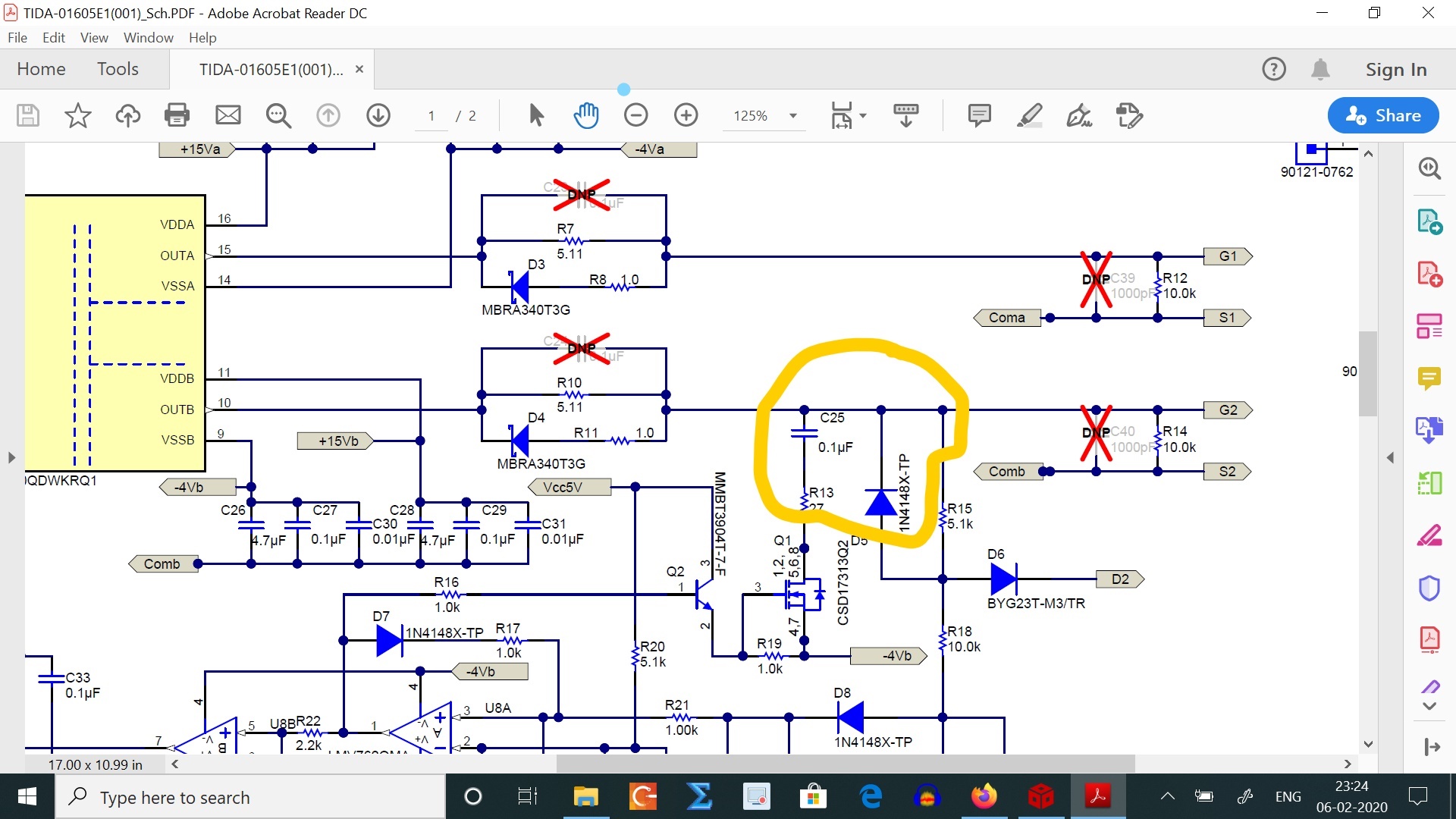Other Parts Discussed in Thread: LM393, LMV762, ISO7721-Q1, ISO7721, TIDA-010054, UCC21530, ISO5452, UCC21750
Hello,
I have two points to discuss as follows,
1) Can we replace LMV762QMA with LM393 with 3k pullup resistor to make design of short circuit protection more viable? What are the other options to give short circuit protection because this IC will not work due to its wrong biasing according to datasheet of these ICs. I have read the thread in which Mr. Girish questioned about this and then searched LM393 for my design. Is it a viable option?
2) Using this tida01605 design for driving the SiC MOSFETs also needs to give voltage surge suppression circuit. If yes then how to implement miller clamp circuit in this TIDA?
Thank you in advance


